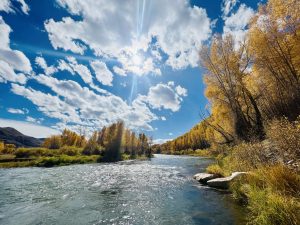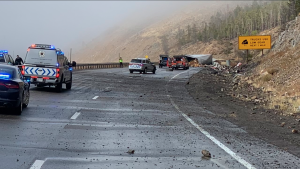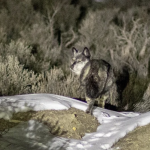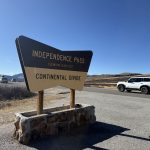A billionaire, a land swap, gold medal fishing, ‘dinosaur’ trout and a permit proposal anglers are calling a ‘bait and switch’ in Colorado
Those who propose limiting access to the Lower Blue River, including a popular spot known as "Jurassic Park,” say increased fishing and declining river health necessitate action
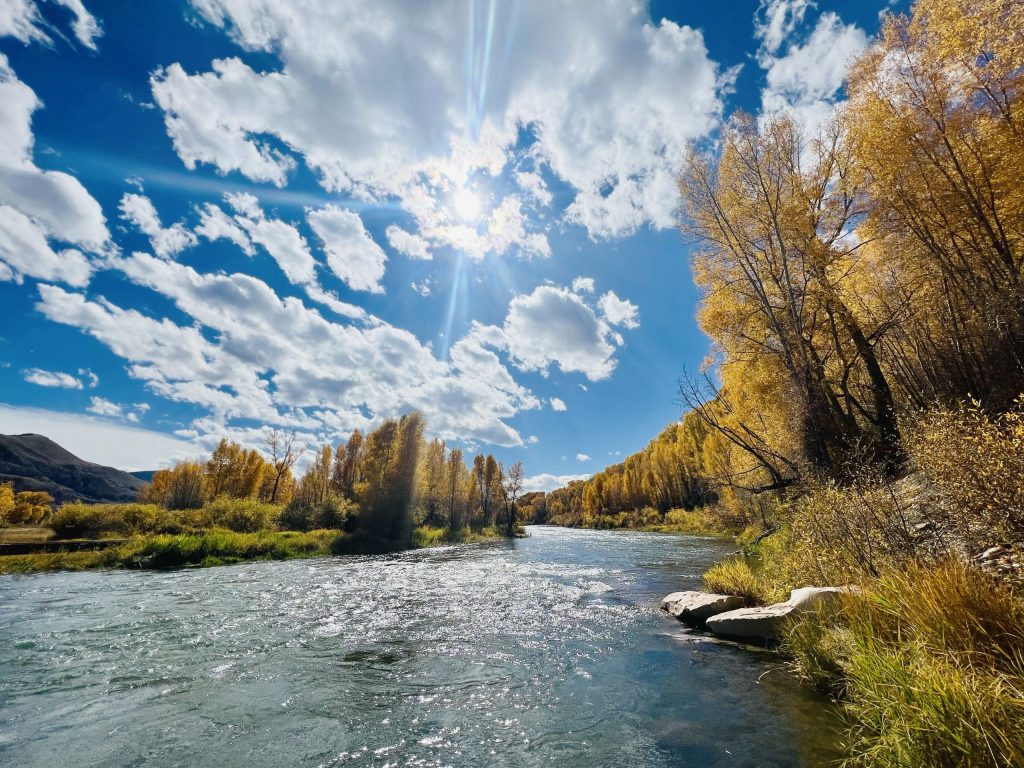
Courtesy photo
Just months after the federal government closed on a land exchange with a billionaire, a proposal to institute a permit system on the Blue River has ignited a conversation about river access and fishery health in Colorado.
Blue Valley Ranch, a more than 2,000-acre property owned by billionaire Paul Tudor Jones II, and the nonprofit Friends of the Lower Blue River say a permit system is necessary to manage the negative impacts of increasing fishing pressure.
On the busiest days in recent years, the Lower Blue River — stretches of which are designated as Gold Medal fishing — has seen up to 45 boats on the river, according to data provided by Blue Valley Ranch. Meanwhile, the ranch’s data also show that fish mortality has increased while the number of fish per mile has dropped significantly in recent years.
“The Lower Blue River, long recognized as one of the greatest trout fisheries in the world, is at a crossroads,” the Friends of the Lower Blue River’s website explains. “With increase in use, so have the fishing pressures on the river. … Fish populations are declining, and the river’s world-class trout fishery is quietly slipping away.”
As currently proposed, the permit system would only apply to boaters planning to fish the Lower Blue River, while nonfishing crafts or those wading to fish would not need a permit. The Friends of the Lower Blue River launched a stakeholder process earlier this year to determine parameters of the permit system.
But the proposal has some anglers upset that a potential permit system wasn’t discussed in the years leading up to the closing of the land swap, despite their concerns about losing public access along the river.
In interviews and emails, more than a half dozen anglers who regularly fish the Lower Blue River said the land swap between Blue Valley Ranch and the federal government was sold to the public as increasing float access to the river.
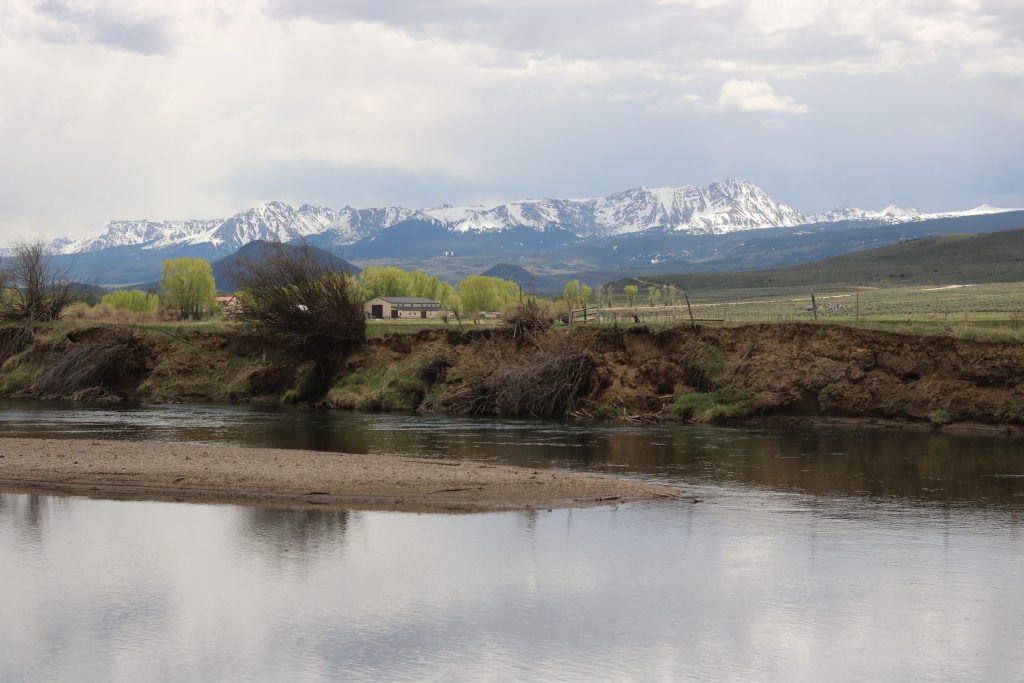
The land exchange proposed by Blue Valley Ranch was negotiated over more than 20 years with the stated purpose of addressing the “checkboard nature” of ownership in the valley. Earlier this year, the parties closed on the deal, which traded nine parcels of federal land totaling 1,489 acres in Grand County for nine parcels of private land totaling 1,830 acres in Grand and Summit counties.
As part of the exchange, the ranch has agreed to cover the costs of river restoration work for a three-quarter-mile stretch of the Blue River near its confluence with the Colorado River, pay for the creation of the Confluence Recreation Area with more than 2 miles of new walking trails and wheel-chair accessible fishing platforms and provide Summit County with $600,000 for new open space acquisition.
Public officials, including Colorado’s senators and Summit and Grand County commissioners, lauded the land exchange as a good deal for the public that would increase fishing access and improve the fishery.
Anglers who opposed the land swap because they felt it was tilted toward private interests, said they see the proposed permit system as the continuation of an effort by a landowner to restrict public access to the river.
“As I float down there today, compared to 20 years ago, there are video cameras all over the place now down there. The land swap happened, so there are less spots for rafters to stop and have lunch and have a break,” longtime river user Brett Wamsley said. “Every time I go down there it feels like it’s more and more difficult and more and more inhospitable to the public having a right to be able to go down there and fish.”
In most other states, the beds of navigable waterways are owned by the public, allowing for floating and wading, even where rivers are flanked by private lands. But in Colorado, river access laws are murky, and touching the riverbed through private land can be considered trespassing.
Blue Valley Ranch denied that it has attempted to restrict public access to the river. The land swap and proposed permit system are “two separate issues,” Blue Valley Ranch fisheries biologist Brien Rose said in a statement.
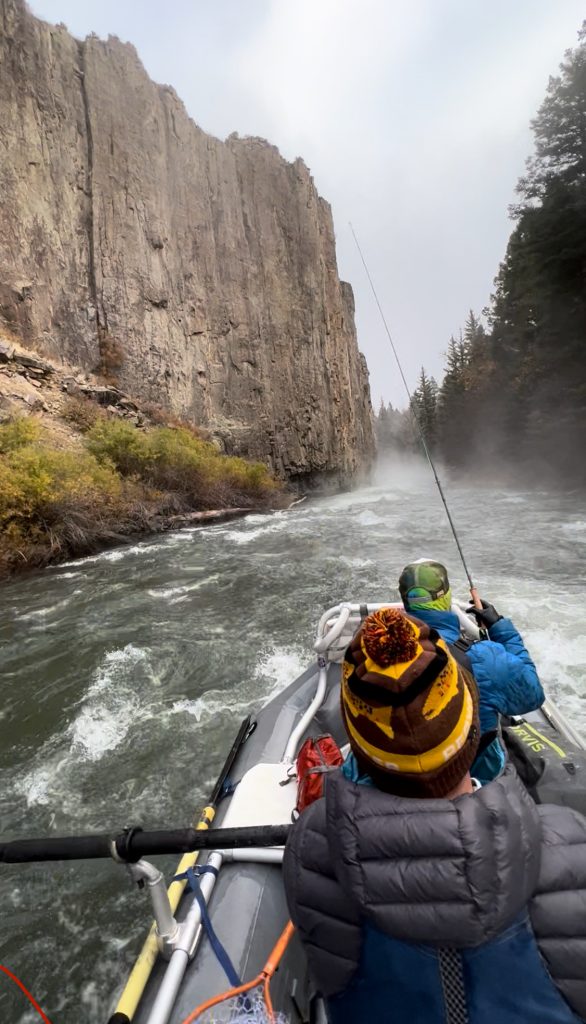
“Blue Valley Ranch has long been committed to balancing recreational management with the river’s ecological needs,” he said. “The decision to consider a management plan is recent and based on growing biological evidence that the river’s ecological health is in decline.”
The ranch has a history of completing river restoration, and a statement on its website says that work “has stabilized the river banks, reduced erosion and sedimentation, narrowed the channel to keep water temperatures cooler at low flows, and provided habitat for fish at all stages of their life cycle.”
While interviewed anglers who oppose the plan agreed that the fishery along the Lower Blue River is declining, they said it’s unfair to pin the blame on increased recreation when there are a multitude of factors involved.
One local fly fishing guide, for example, is frustrated that the proposed management plan for the Lower Blue River doesn’t mention that Blue Valley Ranch has over the years fed the trout that it stocks along the stretch of the river that passes through the ranch.
The section of river through the ranch’s property has earned the nickname “Jurassic Park” due to the size of the rainbow trout there, with anglers reporting fish that weigh upwards of 20 pounds.
“There’s no recognition of the unnatural occurrences that are happening within the ranch,” said Ben McCormick, the owner of Cutthroat Anglers, a fly fishing shop in Silverthorne. “I believe the declining health of the river is almost entirely due to what the ranch is doing to the river. It’s not due to upstream factors.”
Increasing use, declining river health prompt permit plan
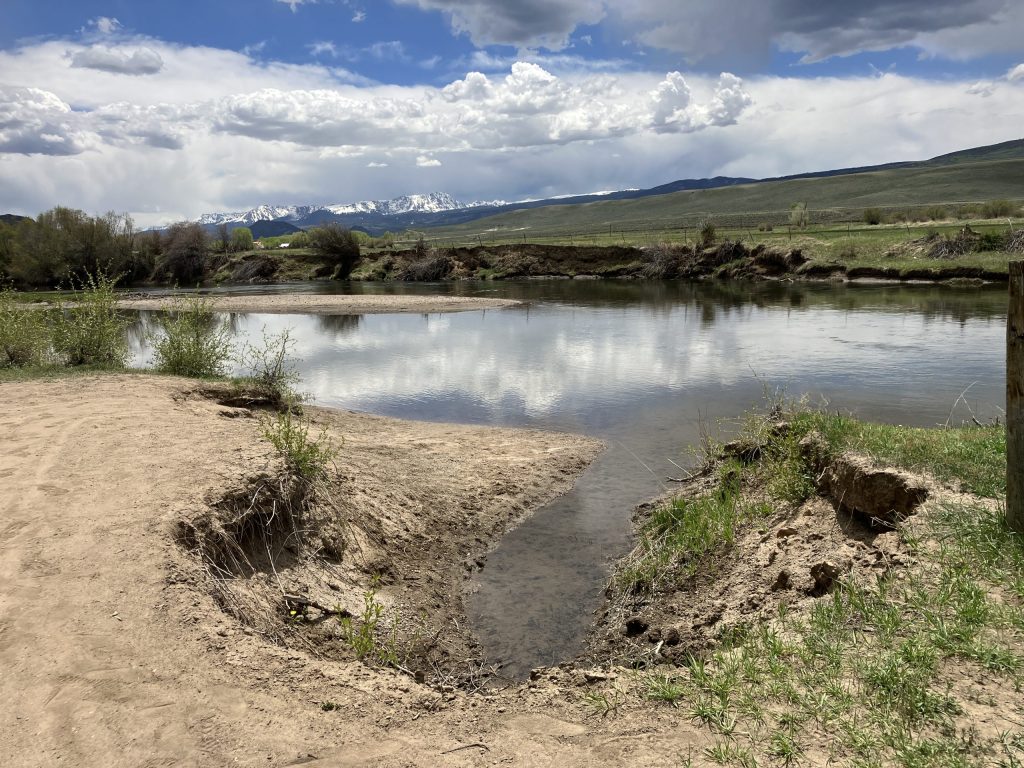
The Blue River starts high in the mountains of Summit County as snowmelt. It filters through dams at the Dillon and Green Mountain reservoirs before connecting to the mighty Colorado River a few miles after crossing into Grand County.
Below Green Mountain Dam, the river flows through a scenic canyon with Class II and III rapids and public lands on either side. Upon exiting the canyon, the landscape opens up, and the river is flanked mostly by private lands, including Blue Valley Ranch. Known as the Lower Blue, this about 15-mile stretch of the river from the dam to the confluence with the Colorado River is where the permit system is proposed.
“The goal of the permit system is to protect the river’s health while ensuring everyone can enjoy quality fishing experiences for years to come,” Friends of the Lower Blue River Executive Director Rachel Ruiz said. “By managing when and how often the river is used, we help keep fish populations strong and the experience sustainable.”
According to Friends of the Lower Blue River, indicators of overuse include a declining fish populations, increased conflicts with land owners and infrastructure complaints, like a lack of parking at put-in and take-out areas.
In addition to fishing pressure, the nonprofit’s website states that the Green Mountain Dam, completed in 1943, traps nutrients, leaving the Lower Blue River with extremely low levels of phosphorus, and alters the river’s flows, natural seasonal patterns and temperatures, impacting fish lifecycles and habitat. Nutrients are vital for river health since they help fuel the food web.
Since 2019, Blue Valley Ranch has implemented camera trap monitoring to count the numbers of boats and anglers traveling through the river on its property. The river has averaged more than 1,400 recreational users throughout its approximately 120-day season, according to Friends of the Blue River’s analysis of the ranch’s data.
“It’s not the overall volume that’s the problem. It’s the peak days,” Ruiz said. “Basically everybody wants to use the river the same way on the same days. That’s what we’re trying to prevent.”
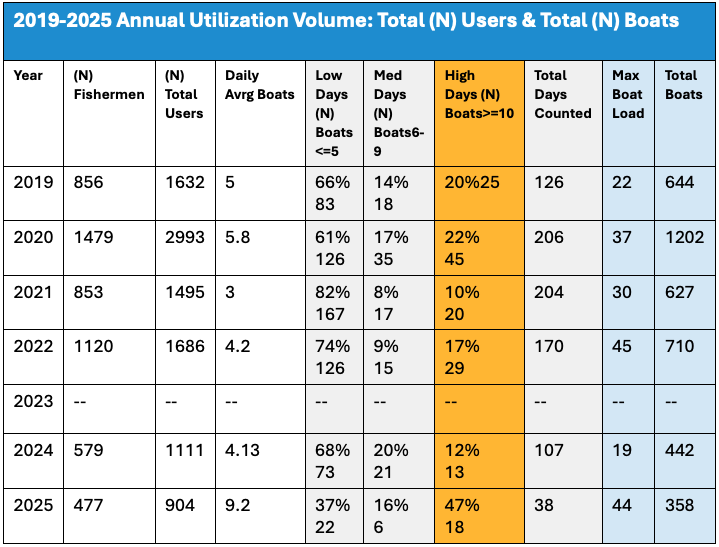
Friends of the Lower Blue corrected data about usage volume after Summit Daily News raised issues with the data amid concerns from anglers that this data was exaggerated. The nonprofit said the error was caused unintentionally when compiling data from two different fishery biologists working with the ranch.
In 2025, trout populations on the Lower Blue River are the lowest they have been in a 30-year study period, according to Blue Valley Ranch. Rose, the ranch’s fishery biologist, said wild trout populations near Spring Creek Road at the foot of the canyon have fallen below Gold Medal standards since 2021, averaging just 30 pounds per acre between 2021 and 2025, roughly half the Gold Medal benchmark. Likewise, rainbow trout densities in the mid-reaches have dropped from between 920-1,376 fish per mile in 2023 to 71-447 fish per mile in 2025, a mortality rate of 43-72%, significantly higher than comparable streams, he said.
Colorado Parks and Wildlife public information officer Rachael Gonzales declined to comment on the Friends of the Lower Blue River and Blue Valley Ranch’s analysis of the health of the Lower Blue River. But in a statement, Gonzales said determining the health of a river “is not as simple as saying, ‘There are a certain number of fish in the river, so it must be healthy.'”
Understanding a river’s health involves evaluating multiple factors, such as the number of fish and macroinvertebrates, water quality indicators, like dissolved oxygen, pH and temperature, and the habitat within the river, Gonzales said. Conditions can also vary from healthy to unhealthy over the length of the river, she said.
“When looking at the Blue River specifically, it has been designated and is managed as a Gold Medal Fishery,” Gonzales said, “which indicates it has an exceptional trout fishery, from Green Mountain Reservoir to the confluence with the Colorado River.”
Anglers share ‘bait and switch’ concerns
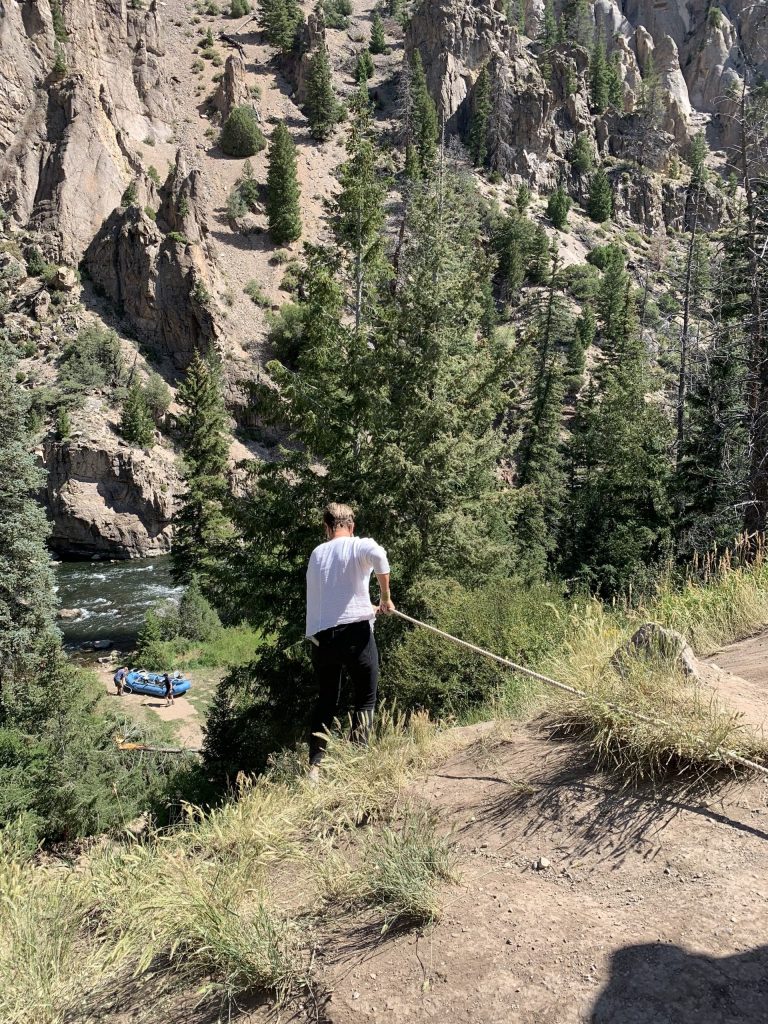
On a weekday afternoon in October, Wamsley and his friend Jessie Hill floated on the Colorado River as they spoke to a reporter over the phone. Residents of the Glenwood Springs area, the two said they have been rafting and fishing the Lower Blue River for about 20 years.
Wamsley, who first started fishing the Lower Blue River when he lived in Denver, said he followed the land swap process for years because he was concerned about losing access to public parcels of land along the Blue River.
“I was against the land swap,” Wamsley said, noting that he attended meetings and submitted protests about the swap. “I didn’t think the public should have given up those parcels. Even though they’re small parcels, they’re waterfront, so they’re valuable land.”
Throughout the land swap, anglers raised concern about losing access to a public parcel of land that offered wade access to fish the Blue River near the Blue Valley Ranch property and about the potential for the private landowner to limit access to the river.
Bryce Metzger, a Frisco resident, said he first started fishing the Lower Blue River about six years ago from the once-public parcel where anglers could wade into the water. Since getting a raft, Metzger said he’s been floating the river for the past few years. He described it as a “bait and switch” for Blue Valley Ranch to promise benefits for floating access during the land swap process, only to seek a permit system soon after it was complete.
Tim McKennie, a Breckenridge resident of more than 30 years, used the same term. McKennie said he followed the land swap process for years and is actively involved with the Blue River Watershed Group, another conservation nonprofit in Summit County. So, he was surprised to learn of the proposal for a permit system.
“It’s a bait and switch,” McKennie said. “This is not about providing access to the public. This is about a guy with multiple billions of dollars getting what he wants.”
McKennie and other anglers also raised concerns that Friends of the Lower Blue River may not be the best organization to lead a stakeholder process for the proposed permit system, due to the nonprofit’s ties to the ranch that could present a conflict of interest.
Rose, the ranch’s fisheries biologist, is a Friends of the Lower Blue River board member, and Adam Poe, another of the nonprofit’s board members, works for a company that handles land exchanges, including the Blue Valley Ranch exchange.
Responding to those concerns, Ruiz said Summit and Grand counties are small communities, so there is always going to be overlap in members’ roles. She noted that none of the Friends of the Lower Blue River board members are paid and they are all required to fill out a conflict of interest statement.
“I think (Friends of the Lower Blue River) is an ideal organization to host these meetings,” Ruiz said. “It has a history of being neutral in controversial development issues over the years, serving as a trusted watchdog of the public process and a source of education on these issues.”
While most consider the land exchange to be a done deal, the nonprofit Colorado Wild Public Lands is continuing to appeal the exchange at the Interior Board of Land Appeals.
Colorado Wild Public Lands Executive Director Nick Green said the proposed permit system never came up during the land swap process despite the nonprofit raising concerns about the public losing access to the river.
“We never once ran into any information discussing the intent to develop a permit system along the river,” Green said.
During the land exchange, Colorado Wild Public Lands raised concern that the deal would allow the billionaire landowner to restrict access and essentially privatize the stretch of river flowing through the ranch, Green said.
“The permitting system is what we think would be a first step toward getting to full privatization of this stretch of the river,” Green said. “This is something we expected to happen and expect to continue to happen as the years progress.”
Blue Valley Ranch has denied that it is working in any way to privatize the river, and it has stated that the permit system was proposed because of declining fish and river health, of which people on both sides of the issue agree.
Legal fish feeding and stocking at ‘Jurassic Park’
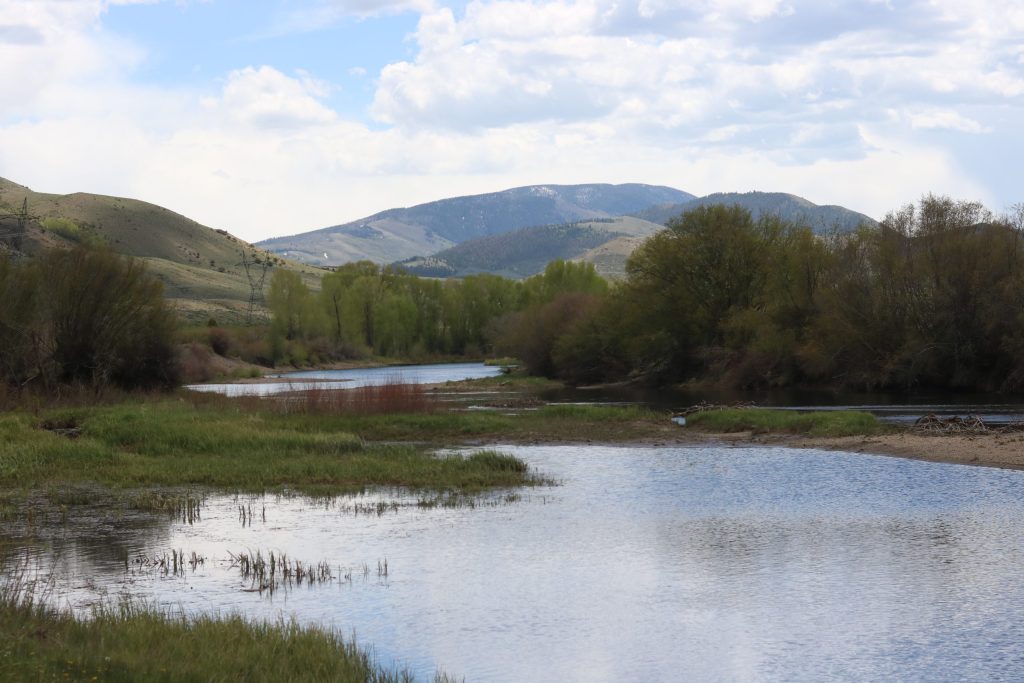
The section of the Lower Blue River that flows through the Blue Valley Ranch’s land is known among the angling community as “Jurassic Park,” due to the size of the rainbow trout found there.
Some anglers questioned Blue Valley Ranch’s fishery management practices — which have included stocking and feeding rainbow trout in the Lower Blue River — and whether these practices may also contribute to the high fish mortality rates.
“Let’s talk about the big, stocked rainbow trout,” McCormick said. “Those fish are not meant to be in the river. They are obese, and every time they are hooked and they go through a fight, they are very near death. And when you’re in a boat that you’re not allowed to get out of, it’s hard to handle.”
McCormick said that the Friends of the Lower Blue River’s management plan appears “cherry picked” because it mentions the impacts of the dam and recreation on the river but doesn’t mention the potential impacts of the ranch’s activities.
By stocking and pellet feeding fish, McCormick said Blue Valley Ranch has created a population of large trout in the river that attracts the very anglers that the ranch is now trying to limit. He worried that these oversized, pellet-fed rainbow trout could have negative impacts on the fishery, like inhibiting species like brown trout from navigating upstream to the canyon.
“Social media and the fly fishing industry are partially to blame because people see pictures of these big fish and there’s nowhere else in the state where you can go float a river and catch a fish like this — a dinosaur,” McCormick said. “So people have seen these pictures, they’ve heard about the land swap, and every year more people are discovering the Lower Blue River.”
Other anglers shared similar concerns.
“The reason people want to go down there and fish that section of river is because Blue Valley Ranch is running an artificial fish hatchery there,” McKennie said. “To say that is the natural state of the river and that we need to improve it is just ridiculous.”
Rose, the ranch’s fishery biologist, said that Blue Valley Ranch’s fish stocking program supports natural reproduction and enhances diversity within the fishery. The ranch has worked with Colorado Parks and Wildlife to introduce whirling disease-resistant “Hofer” rainbow trout, a strain developed specifically to withstand the disease while maintaining strong wild strains, he said.
While Rose said pellet feeding has “historically” occurred to offset the nutrient-poor sections of the river, he said the ranch is not currently pellet feeding trout on the Lower Blue. He did not respond to a follow up question seeking more detail on the ranch’s pellet feeding practices.
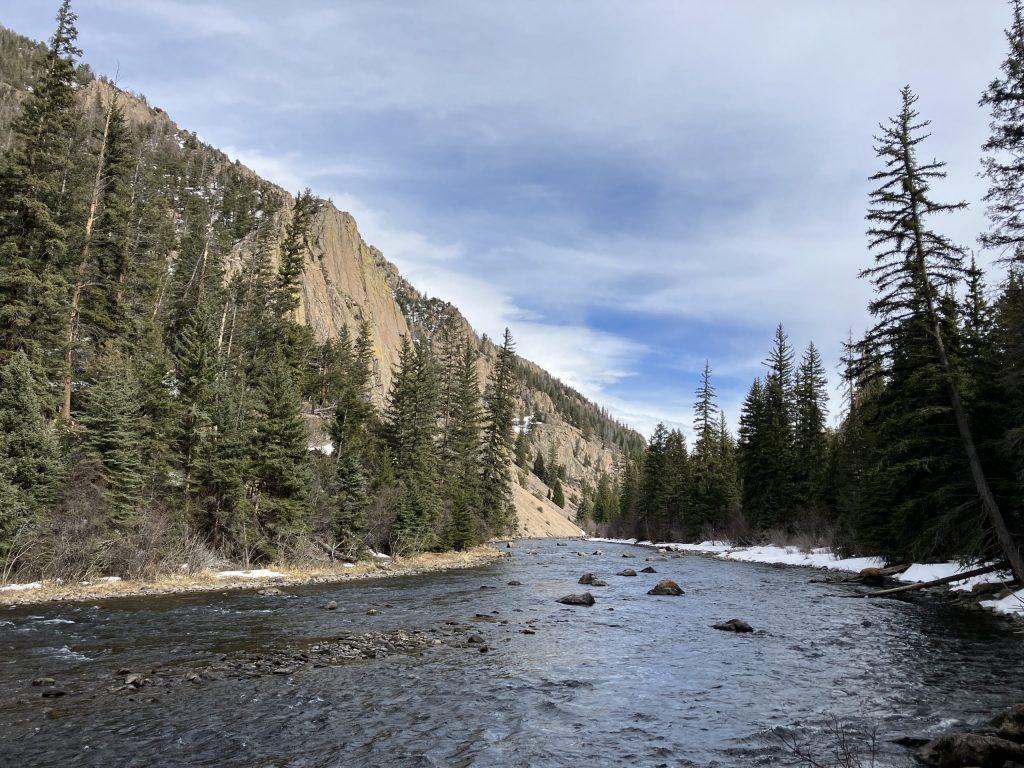
“The supplemental feeding program was developed in consultation with fisheries biologists and based on established science regarding nutrient limitation and fish energetics in cold, low-productivity systems,” Rose said. “All feeding activities were closely monitored for potential side effects, including changes in water quality, sediment accumulation, or altered fish distribution. Feeding rates were intentionally low and localized to avoid over-enrichment or disruption of natural trophic processes.”
Rose said that the ranch believes the need for pellet feeding can be reduced with “cooperative management” of the Lower Blue River.
In the Upper Colorado River Basin, permits are not required for the private stocking of rainbow trout, brook trout, brown trout, cutthroat trout and their hybrids, except for in critical habitat for federally-listed endangered species, Gonzales said. Colorado Parks and Wildlife does not track the private stocking of fish in the Lower Blue River since it is not considered critical habitat, she said.
The state wildlife agency also does not track the feeding of fish, which is a legal practice, on waters that flow through private lands, Gonzales said. But she said that Colorado Parks and Wildlife does believe that the practice of feeding fish could have detrimental impacts on ecosystems.
“In general terms, and not specific to any individual property or landowner, the practice of fish feeding has the potential to have negative effects on fisheries as it may result in artificially high densities and maximum sizes of fish particularly in areas where feeding occurs, and those fish populations cannot be sustained in adjacent areas where fish feeding is not occurring due to natural limitations on food and habitat availability,” Gonzales said. “Furthermore, fish could potentially concentrate at feeding sites, which could result in increased risk of disease and parasite transmission.”
The Colorado Headwaters Chapter of Trout Unlimited has also become interested in the question of how the practice of feeding fish may be impacting aquatic ecosystems throughout the state.
“I’m trying to stir that issue statewide: Are we doing good things or bad things to our rivers by people being able to stock whatever fish they want and feed them that trout chow?” Colorado Headwaters President Kirk Klancke said. “It’s something that happens all over the state, not just Blue Valley Ranch. It’s a statewide issue.”
In general, Klancke said, “The mortality rate is a lot higher with a big fish than a little one.”
Ruiz, the executive director of Friends of the Lower Blue River, said that the Friends of the Lower Blue River isn’t qualified to determine whether the pellet feeding of fish has an impact on the ecosystem and river health. She said, “I’m not a fisheries biologist, and I don’t think Friends of the Lower Blue River is a subject matter expert.”
McCormick noted that it is illegal to feed big game, like elk and deer, and to “chum,” or to use food to attract fish to a certain area so they can be caught. So, he questioned why it is legal for private landowners to feed fish in streams and rivers.
He said that he is happy to see that Blue Valley Ranch is concerned about the health of the river but that the ranch should acknowledge that its own activities on the river may be having an impact.
“Everyone’s seen the Jurassic Park movies, right? The plot is a billionaire wants to bring back dinosaurs unnaturally. It shows that human intervention with things like that in nature normally has poor consequences,” McCormick said. “We don’t fully understand nature, we can’t fully recreate nature, and we can’t predict the impacts that us toying with these things are going to have on an ecosystem. The same thing is being done at the ranch, where the ecosystem is being altered by humans.”
Details on permit plan are still in progress
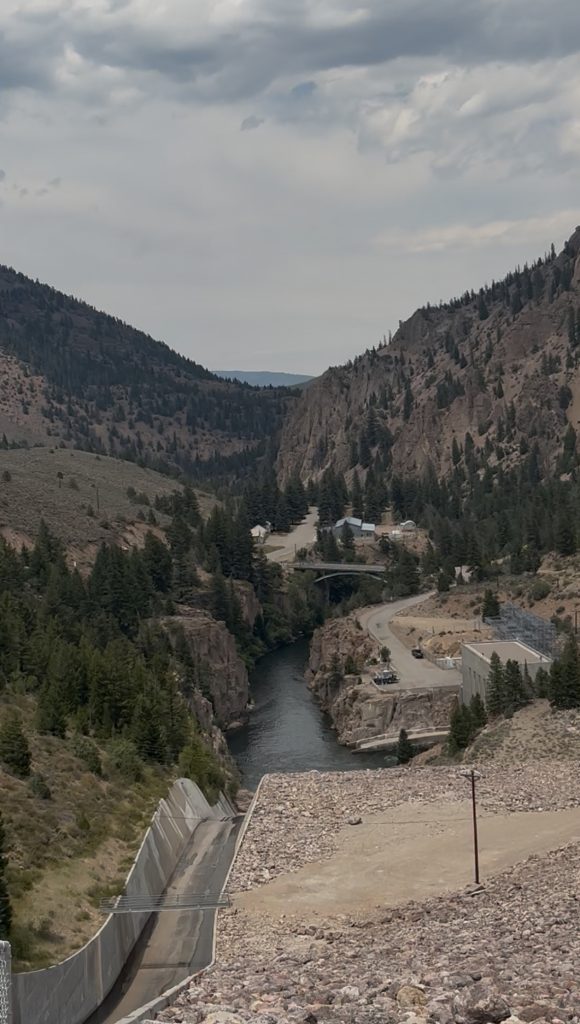
Ruiz, the executive director of the Friends of the Lower Blue River, said that progress on the stakeholder process for developing a permit system has been delayed due to the ongoing government shutdown. But the nonprofit has launched a survey to seek feedback on the permit proposal and a management plan for the river.
At this point in time, it is unclear what entity would operate the permit system or exactly what restrictions the proposed system would include, Ruiz said. She said the goal is to have a pilot project up and running for at least part of next summer.
“Before making final decisions, (Friends of the Lower Blue River) is actively seeking public input on which sections of the river should be included, recognizing stakeholders hold different perspectives on the program’s scope,” Ruiz said. “Both the stakeholder assembly and the review of the Lower Blue River Management Plan are still in their early stages.”
The permit system isn’t expected to cost the public any money, since the ranch has offered to pay for the operation of the system, Ruiz said.
Rose, the ranch’s fisheries biologist, said that any permit system would be guided by the stakeholder process as well as science.
“We appreciate and understand the love so many people have for the Blue River,” Rose said. “While discussion of this project is in its early stages, discussions among stakeholders are key to the river’s success. The process will explore practical ways to protect the river’s long-term health while ensuring sustainable recreational use for future generations.”

